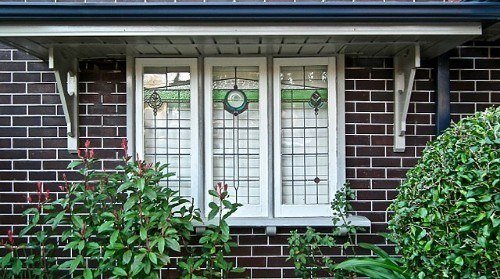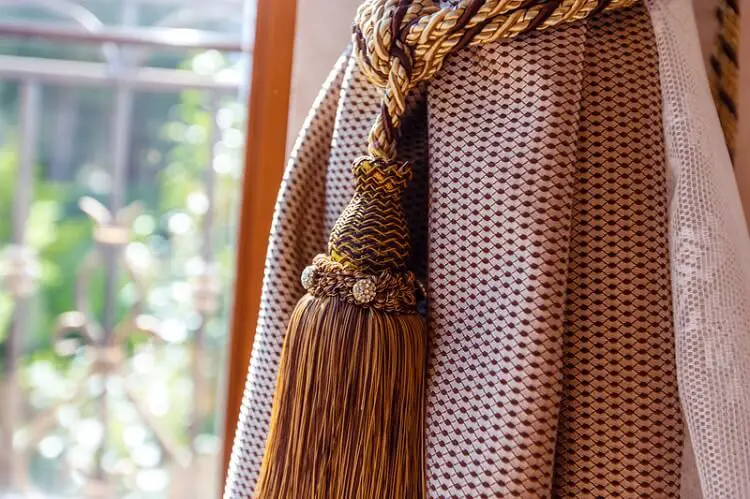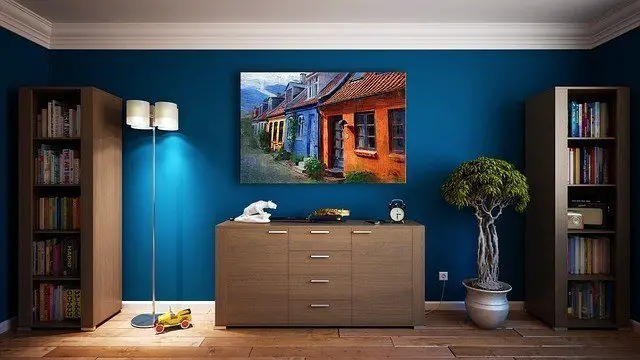The right window soundproofing film can be a permanent solution to your noise problem. Other solutions include eliminating gaps, installing the correct type of glass, and adding soundproof curtains that can help you enjoy your peace and quiet.
To maintain a peaceful internal environment in your house or office, you want to use the best acoustic solution to keep the level of noise under control. Noise is all around us, and dealing with it is inevitable.
While window film usually isn’t sold as ‘soundproofing film’ a product like the one below will help dampen sound to a degree:
We recommend you double it up for greater impact.
In this article, we’ll explain everything you need to know about choosing and installing window soundproofing film. We’ll also tell you about other solutions that you might want to try.
What is Window Soundproofing Film?
There are different types of windows, depending on their designs and layouts.
The material and layers of the window as well as the type of window (for example a skylight) will also affect how soundproof it will be.
Window soundproofing film features an internal layer, sandwiched between 2 layers to block external noise and keep your internal environment noise-free, so you can sleep, study, and work better. This layer is also known as the core layer and will significantly reduce the amount of noise heard.
The window soundproofing film will also prevent the noise from your house from passing outside. This will improve your privacy and guarantee that no one will accidentally hear your private conversations.
This film has a strong lamination core in the middle between 2 layers of polymer.
Ideally, this film should be installed on a double-layer window that has internal and external glass sheets, as it acts as a dampening film that reduces the noise significantly.
However, most people will have a single-layer window, and in this case, the film will be stuck on one side to decrease the noise level.

A professional-level window soundproofing film isn’t the easiest to obtain and can be too expensive to buy. Still, you can make your own DIY soundproofing film to reduce the noise coming from the outside.
This film has a high STC or Sound Transmission Class. This refers to how efficient the material is at reducing sound waves. It will eliminate the need for any other soundproofing method.
Some fancy types of window soundproofing films come with an extra feature that allows you to enjoy music inside the room instead of getting provoked by the outside noise.
The film is made of 2 layers of polymer with built-in speakers in the middle.
The first layer of the polymer will absorb the outside noise while the second one will block it.
The speaker will emit music that you can enjoy whenever you like.
Nevertheless, this is a futuristic product that you’re unlikely to find in a home improvement store. However, whenever it’s available for sale, this film will be an excellent choice for your home or office.
How to Use the Window Soundproofing Film
Unless you can get your hands on the professional-grade window soundproofing film, you can always opt for a cheaper and more convenient DIY solution.
Environmental PVC and plastic vinyl films are easy to apply and will add an extra layer that reduces the intensity of sound waves traveling through the window.
These window soundproofing films usually have static cling attachment methods, so they’re reusable. Unlike adhesive films, these are easy to remove and can be easily stored away if you don’t need them.
Why Should You Use a Window Soundproofing Film?
Windows are thinner than surrounding walls, so they represent the eyes and ears of your home or office.
If you can see and hear most of the things going outside when the window is closed, then the outsiders can hear what is going inside your room. Installing a window soundproofing film comes with lots of advantages, so you should think about installing one in every room of your house or office.
- The first and most significant advantage of these films is sound dampening. The film has a surface that is softer than glass, so the sound waves won’t be reflected in the same way, and you’re likely to experience less noise. The film will also block any gaps or cracks in your window that might let the outside noise affect the peaceful atmosphere inside your home or office.
- People who suffer from sleeping problems can greatly benefit from installing window soundproofing film. Reducing the external noise will help improve the quality of your sleep because you won’t be affected by what is happening outside.
- Some health conditions can get worse with extreme noise. If you have an autistic child who is sensitive to noise in the house, you should definitely think about installing soundproofing film. This film will reduce the external noise that has an adverse effect on your child’s development and might hinder behavioral progress.
- Most window soundproofing films have energy-saving features. They will prevent the heat from escaping out of your house in cold weather, so you’ll have to spend less money to maintain the internal temperature. At the same time, some of these films have UV blocking properties, so they will keep you healthy and reduce the harmful effects of exposure to the UV rays.
- Some window films are colored or opaque, so they will increase the level of your privacy. Installing these window films will prevent outsiders from taking a look at what you’re doing inside the house. This is incredibly useful if your windows are right in front of another building or if you live on the ground floor and feel that your room is too exposed.
- These films work with different types of glass. They will save you the money of installing acoustic-grade glass thanks to their soundproofing properties.
- You might be able to find some window soundproofing films that feature several patterns. Choosing the right pattern to complement the décor in your home or office will add to the aesthetics while decreasing the level of noise for maximum comfort.
Window soundproofing films can also be installed on glass doors and separators. There are lots of options available, so you’ll easily find one that works for you.
Other Options to Soundproof your Home or Office
If you’re unable to buy a window soundproofing film, you can experiment with other available options. Nevertheless, you should know that these methods might be less efficient.
Install Clear MLV
Mass-loaded vinyl has excellent soundproofing properties and can be used if you can’t install window film. Unlike window film, you should use transparent tape to attach MLV to your window panes.
Add Another Layer to Your Window
In most cases, the window isn’t soundproof because the glass installed is too thin. Unless you’re willing to invest in a double-layer window, you can install an extra acrylic layer to your pre-existing window.

This method won’t cancel the external level of the noise completely, but it will improve it. However, for best results, you should make sure that your window features acoustic-grade glass or laminated glass.
The acrylic glass should fit right over the window, so you’ll need to install a new frame. This method is a little bit expensive and can take some time until you get it right. However, it‘s popular because it lets the sunlight pass through.
Use Window Plugs
These are layers of window mats, acoustic foam, and wood that go all over the window to block the noise and the sunlight, too.
However, some people won’t be happy with the final outcome because you can’t have access to sunlight.
Nevertheless, window plugs are the only convenient option for music studios and stores where you need maximum silence.
The best thing about window plugs is that they can be removed when you don’t need them.
Fix the Gaps
The best window soundproofing film won’t be enough if you have gaps in your window. Any small space between the glass and the window frame is enough to let the noise pass and air pass through, which means that the window will be less energy-efficient than you wish it to be.
Weatherstripping tape and DIY draft stoppers will work to fix this problem. They will seal the openings that let the air and noise pass through. Weatherstripping tape comes in various materials, including silicone, foam, and rubber, and is straightforward to use.
You should choose the material based on the level of friction that you expect the tape to be subject to. Moreover, the intensity of the sunlight can also affect the efficiency of the tape.
Some materials like rubber will lose its efficiency faster than other options like closed-cell foam and silicone. The weatherstripping tape should be applied to a clean surface to guarantee the best result.
Adjust the Frame
If the window isn’t installed properly, then you need to have this fixed. Any gaps should be eliminated because if the frame doesn’t fit right, the weatherstripping tape won’t work.
You can use an acoustic caulk to fill in the gaps between the window and the frame. This will prevent the passage of air and sound.

Acoustic caulk is designed to stay flexible and doesn’t have to be replaced often. Anyone can install this material around the window, and it will stay functional for a very long time.
Pick Soundproofing Curtains
If you still hear the outside noise or are worried about other people invading your privacy, then adding a second layer might be the right step. Soundproofing curtains come in various patterns to match the décor inside your home or office. They also improve the internal sound quality while preventing the noise from getting inside.

These thick curtains won’t block the noise entirely if used on their own. However, they can be used to complement other methods if you feel that the noise still finds its way into your home or office.
Curtains also reduce the echo inside the room because they have a soft surface, unlike walls. The sound waves won’t reflect off them the way they do when they hit the walls in your room.
Rearrange the Furniture
If you don’t mind losing the light that comes through the window, you can choose to block it completely by placing a cupboard in front of it.

If you still want some light, you can arrange some furniture pieces around the window as they will help dampen the sound.
How to Choose the Best Soundproofing Method
There are numerous solutions to fix the problem of external noise, and choosing the right one for you depends on a number of factors.
- The degree of soundproofing you need.
- Whether you’re looking for a permanent or temporary solution.
- Your budget.
- The number of windows that you need to soundproof.
- Whether you want to hire a professional to do the job or you prefer to finish it on your own.
The Do’s and Don’ts of Installing a Window Soundproofing Film
Installing a window soundproofing film is a permanent solution to the noise problem.
However, to be done right, there are a few things that you need to take into consideration.
Do – Determine the Type and Extent of the Noise that Bothers You
There are different types of noise, and some of them can be tolerated, unlike others. Depending on your personal needs, you can think about the correct method to soundproof your windows, and whether you need to make a few adjustments before installing a soundproofing film.
Writers, scientists, and parents who have autistic children in the house, for example, would be looking for maximum noise cancellation. In that case, you might need to take a look at your window and eliminate any gaps before adding the film.
Do – Add Your Personal Touch
Luckily, there are several types of window soundproofing films available, and you can easily find the right one for you. Check out opaque films or choose one with a pattern that matches the rest of your décor. If you’re not happy with the way the film looks, you can add a thick curtain on top to increase the soundproofing effect.
Don’t – Pick Low-Grade Glass
The window soundproofing film will complement the job of the glass installed in your window. If it’s too thin or of low quality, you should have it replaced before picking a film to block the noise.
Don’t – Ignore the Gaps
Have the window fixed and eliminate any gaps between the glass and the frame before adding the soundproofing film.
Conclusion
The outside noise will affect the quality of life in your home and your concentration when you’re working in the office. Installing the best window soundproofing film will get rid of the problem and allow you to enjoy your time peacefully.
There are currently several types of film available on the market, and they can be installed on top of the glass already installed to your window. In the future, we might be seeing more futuristic products that allow you to enjoy music from built-in speakers after blocking the outside noise.
As an Amazon Associate I may earn a small fee from qualifying purchases at no extra cost to you. This helps us run the site, so thanks for your support!

